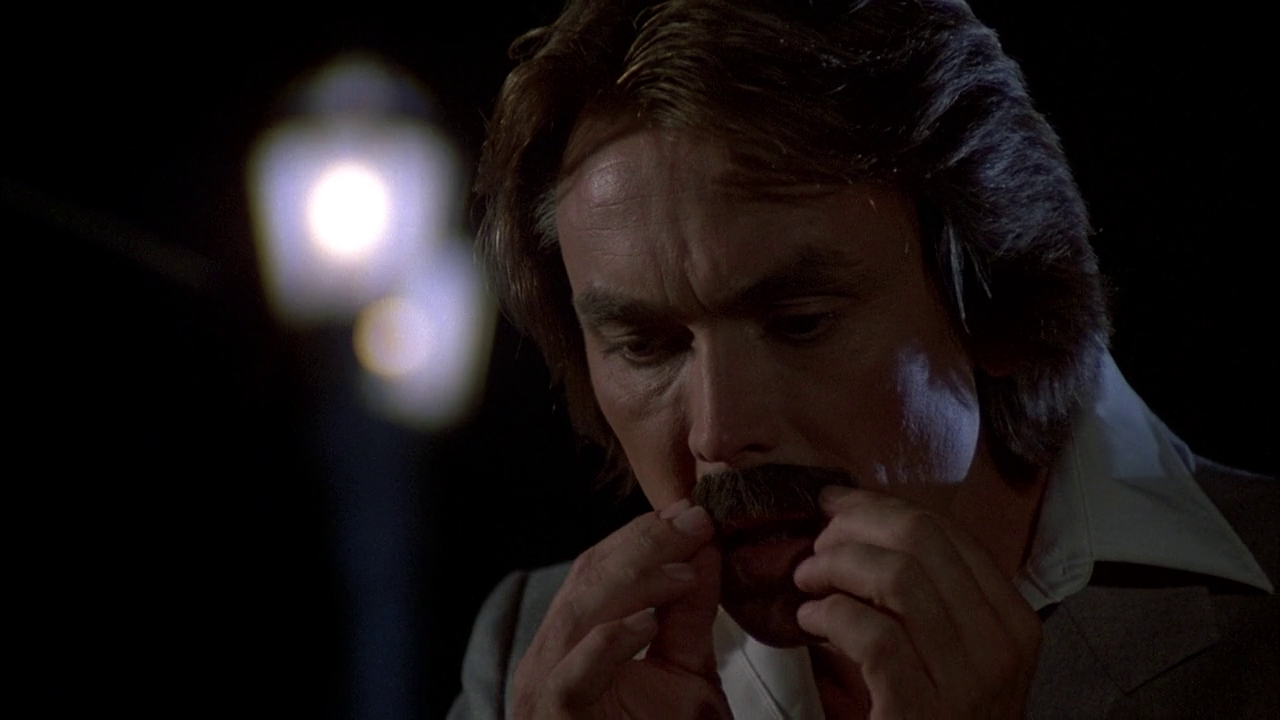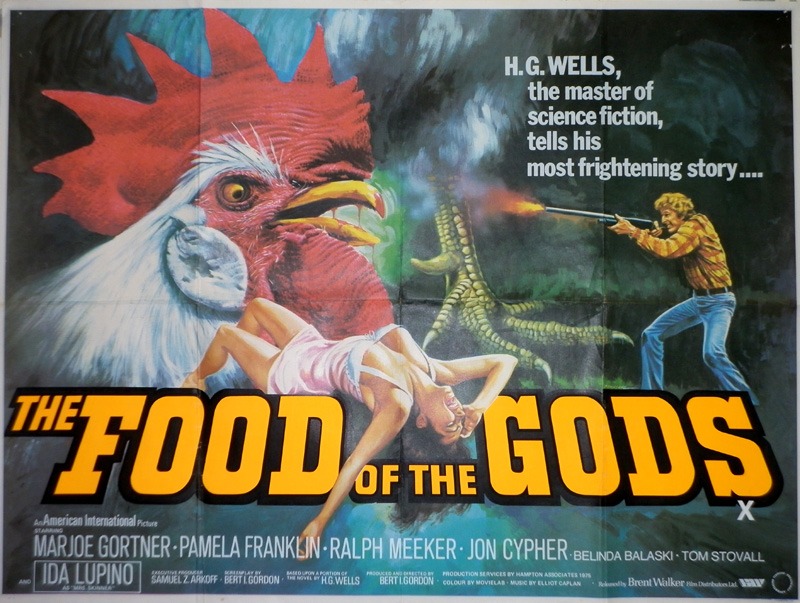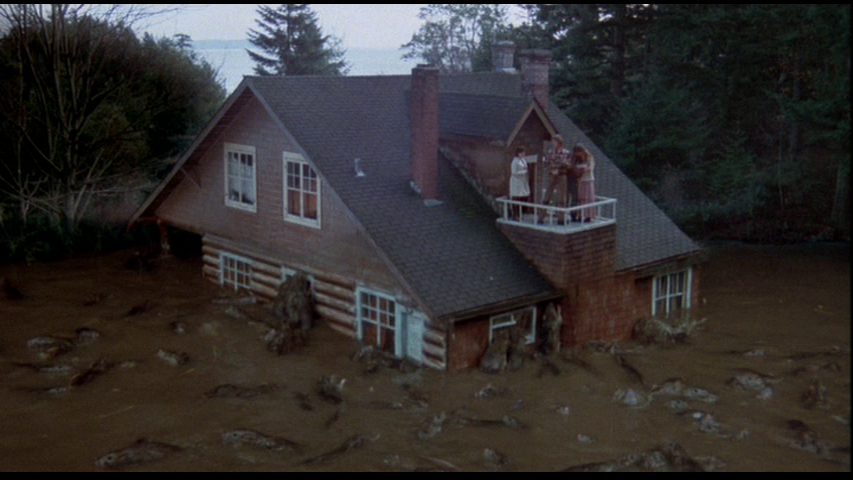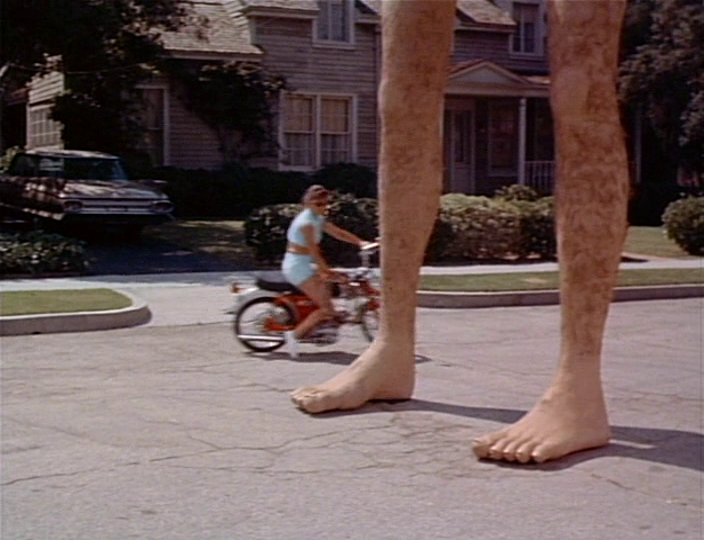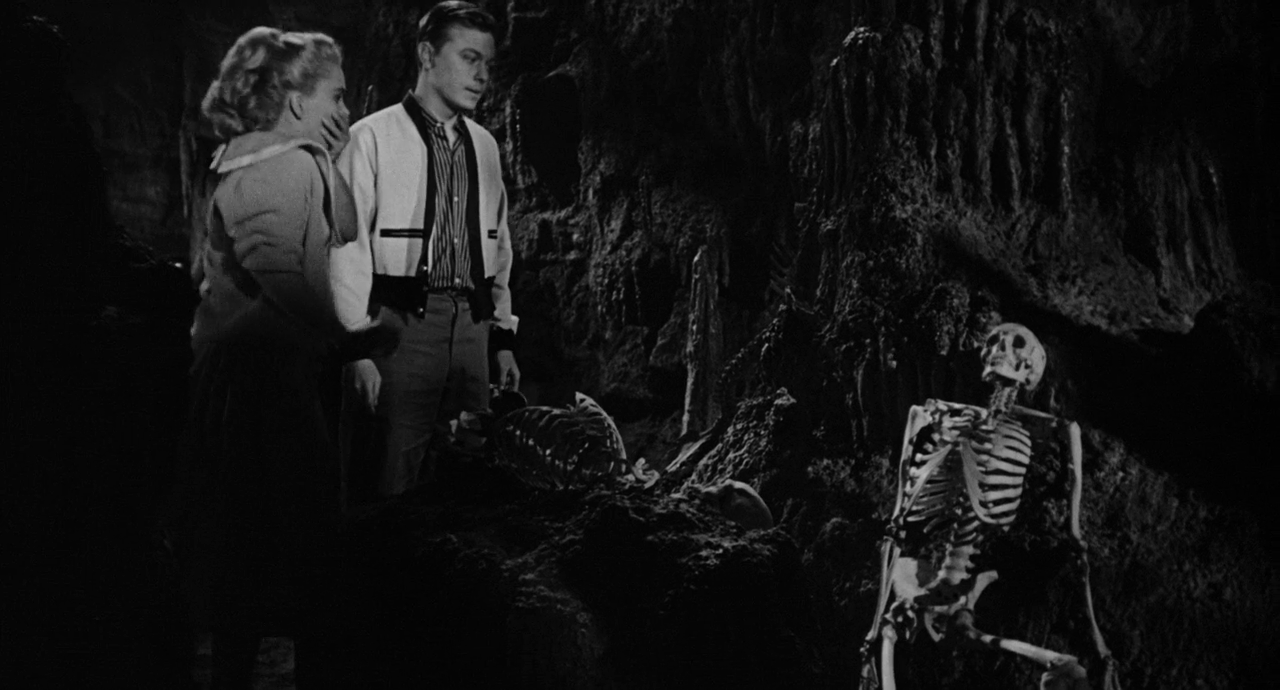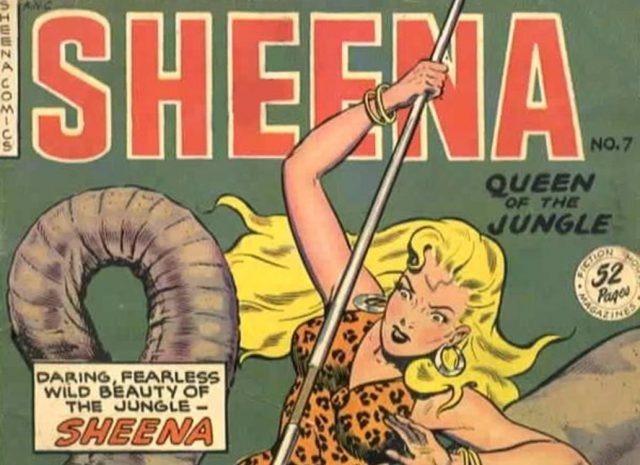The 80s were a booming time for sword and sorcery films and the year 1982 in particular, with such fantastical films as John Milius’ Conan the Barbarian, Albert Pyun’s The Sword and the Sorcerer and Jack Hill’s bizarre entry of Sorceress crowding the theatres, but today we will be looking at another jewel in that particular crown, one that starred Marc Singer and the beautiful Tanya Roberts in a film simply titled The Beastmaster.

This film was based on renowned science fiction author Andre Norton's 1959 science fiction novel The Beast Master, which centred around a former soldier who had empathic and telepathic connections with a group of genetically altered animals and the story took place on far-off planets, needless to say, not much of the source made its way into the screenplay by Paul Pepperman and Don Coscarelli as they only kept the telepathic bond with animals and jettisoned pretty much everything else, they simply plopped the hero down into a world familiar to fans of Robert E. Howard and Edgar Rice Burroughs and made a movie that was kind of a throwback to the old Steve Reeves sword and sandal movies. This is a world of dark sorcery, vile villains, weird monsters and beautiful women, this is the world of The Beastmaster.

“I wonder if I could trade this thing in for a blaster?”
Even though the throughline of The Beastmaster follows the basic structure of Joseph Campbell’s “Hero’s Journey” when you watch the film you can’t help but be a little impressed with how many stories they managed to cram into just two hours. The film opens with an evil high priest named Maxx (Rip Torn) being told a prophecy by his three witches, that he will die at the hands of King Zed's unborn son, not wanting that to happen he sends one of his witches to kidnap and kill the child, who is teleported out of his mother’s womb and into that of an ox, but before she can finish the job and sacrifice the babe to their dark god, a villager (Ben Hammer) rescues the child and then takes him away to raise him as his own in the village of Emur. The child grows up to be a great warrior, named Dar (Marc Singer), who over time, develops an ability to telepathically communicate with animals. Unfortunately, this talent does not help save his village from the Jun horde, a fanatic bunch of barbarians who have allied themselves with Maax, but having witnessed his people being slaughtered Dar decides to journey to Aruk to avenge them.

“Can your scrying pool get HBO?”
Along the way, Dar picks up some travelling companions to help him on his quest, a golden eagle he names Sharak, and a pair of thieving ferrets he names Kodo and Podo, who save him from quicksand, though to be fair it should be pointed out that they caused him to fall into it in the first place, and his final animal ally is a black tiger named Ruh, who he rescues from a group of Jun warriors. Now, animal companions are great and all but you can’t have a proper sword and sorcery film without a pretty damsel in distress and for this film that comes in the form of a slave girl named Kiri (Tanya Roberts), who Dar spies upon while she’s bathing nude by a beautiful waterfall – it should be noted that he uses his tiger to con a kiss out of the half-naked girl, making our noble hero just a little flawed – and like many young men of the 80s, the sight of Tanya Roberts coming out of the pool topless was a nice way to be ushered into puberty.

“Can someone bring me a towel, this water is freezing!”
This may seem like a lot is going on but where not even at the film’s halfway point, soon after his close encounter with Kiri he has a more disturbing encounter with an eerie half-bird, half-human race who dissolve their prey for nourishment, wrapping their victims in the bat-like wings to basically drink them until they are but a gooey mess, but Dar is spared such a fate because, apparently, this race of maneaters worship eagles and when Dar summons Sharak they spare him and give him an amulet. But who exactly are these mysterious and dangerous creatures, you ask? And what is this strange amulet and why did they give it to Dar? I hope you don’t expect an answer to those questions because other than the amulet kind of working as a “Get out of dire circumstances free card” we never do find what their whole deal was.

“Give our agents a call and we’ll do lunch.”
After that chance encounter, one that will give many a young viewers nightmares, Dar will finally arrive at the city of Aruk, where discovers that Maax has now assumed total control and is having a great time sacrificing the children of the city to his dark god, needless to say, this doesn’t sit too well with our hero but as we're still not quite at the halfway point of the film, he can’t completely thwart Maxx, at least not yet, thus he is able to save one of the two children being sacrificed – way to go, Dar, you da man – just before learning that Kiri is set to be sacrificed as well and that just won’t stand. On his way to save her, Dar is joined by the deposed King’s younger son Tal (Josh Milrad) and his bodyguard Seth (John Amos), neither one of whom realizes just yet that Dar is the King’s long-lost first child. What follows here is a bunch of running around by our heroes, a couple of fun rescues, a few skirmishes with Jun soldiers and a big fiery showdown that pits our small band of heroes against insurmountable odds.

He may not have been as large as Arnold Schwarzenegger but Singer was certainly ripped.
Stray Observations:
• The three witches who tell high priest Maax of the prophecy come from a long tradition of such trios, dating back to the Stygian witches of Greek mythology, the three Norns of Norse mythology and the witches from Shakespeare’s Macbeth, and like in most cases of prophecy any attempt to thwart them will most likely result in fulfilling them.
• When an evil priest tells you that your unborn child must be cut out of the womb and sacrificed to his god, and all you can come up with is “I could have you killed” but then you don't kill him and only banish the evil bastard, well, the following events are kind of on you.
• The houses of the village of Emur are built on towering stilts but the village is located on a mountainous plain so flash flooding is certainly not a threat, and the walls that surround them should keep the residents safe from predators, so why build your homes so high off the ground? And this impractical design certainly didn’t stop them from being slaughtered by the Jun horde.
• Dar runs around in nothing but a loin cloth and his animal friends as his companions to help him on his adventures, basically, he’s Conan the Barbarian meets Tarzan.
• The half-bird, half-human race that Dar encounters gives off a very strong Mahar vibe from the Edgar Rice Burroughs novel At the Earth’s Core.
• Tal is brother to Dar, and they are both sons of King Zed, but as Dar’s mother died while he was snatched from the womb who exactly is Tal’s mother? Later in the film, we find King Zed a blind old man imprisoned in the Temple of Ar and I’m left wondering “When was he allowed to get married and have another child?”
• This film gives us a classic villain move, where the hero thinks he’s killed the bad guy only for him to pop up for one final attack because heroes are notoriously bad at finishing the job until the end credits roll.
• Under Dar’s command, the people of Aruk pull up the drawbridge and cover the tar moat that surrounds the city, so that the mounted Juns will ride into it, but the Juns had allied themselves with Maax years ago so they should have been quite familiar with the city’s defences.

“I rely on the stupidity of strangers.”
Don Coscarelli’s The Beastmaster has all the ingredients of the pulp adventure tales of the 30s and 40s, and even its plot structure has that same episodic nature of those stories, the one misstep here is in having Dar confront and kill Maxx, the film’s primary antagonist, with over twenty minutes remaining and then having the film’s final confrontation being with the Jun chieftain, who has had barely any screen time and absolutely no character depth other to look like he stepped out of a Frank Frazetta painting. Even stranger is the fact that once Dar defeats the “Death Dealer” our heroes are about to get wiped out by the remaining warriors of the Jun horde, who outnumber and surround Dar and his friends, only to be saved by those weird birdmen from earlier in the film, in what must be one of the most bizarre Deus ex machina in cinema history.
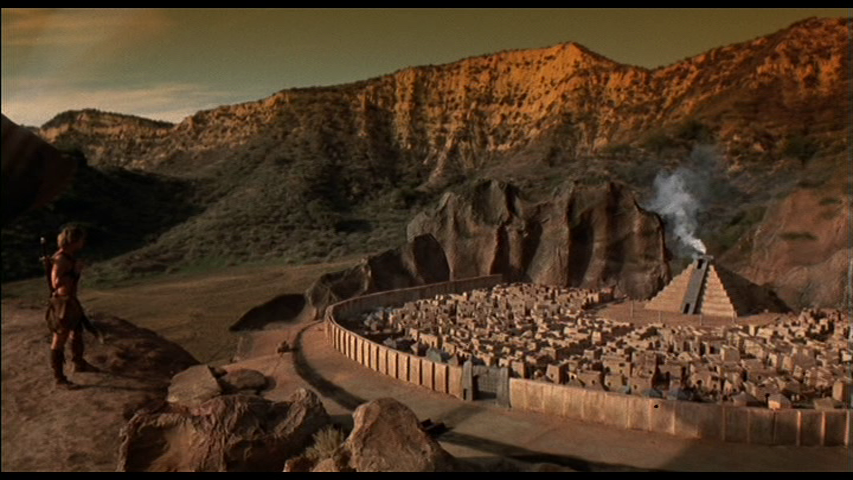
Note: The film's use of in-camera effects is quite extraordinary and their foreground model work is especially fantastic, not to mention all the amazing practical make-up effects for the various creatures.
Now, I don’t expect hard and fast logic in my fantasy movies but when a group of weird-ass monsters show up to save the hero in the climax of your film, that’s a problem, not to mention Coscarelli breaking a narrative rule by introducing this really cool bladed throwing weapon, given to him by his dying foster father, but then he never even uses the bloody thing! He just gives it to his little brother and then fucks off with Tanya Roberts. Wouldn’t it have made more sense for this thing to have been used against Rip Torn atop the Temple of the God Ar, or at least against the Jun chieftain?

“I get stabbed by my own weapon, and it’s not even treated as ironic.”
So yeah, the story structure isn’t the best, with the plot meandering and becoming a little too episodic, but the fact that Coscarelli was literally kicked out of the editing room by the film’s money men it’s not fair to lay the blame solely on him, and who knows, maybe someday we will get the "Coscarelli Cut." That all said, the movie is still a ton of fun and Marc Singer made for a fantastic action hero, he wielded the sword with a natural grace and with it being shot by John Alcott, who was Stanley Kubrick’s primary cinematographer, you can’t help but admire the beauty of the film, What I’m trying to say here is that despite its flaws you only have to look from fantastic production designs to the iconic score by Lee Holdridge to find a lot to love about The Beastmaster and that any of those flaws can easily be overlooked due to the film’s overall element of fun and energy, that and Tanya Roberts taking off her top of course.

